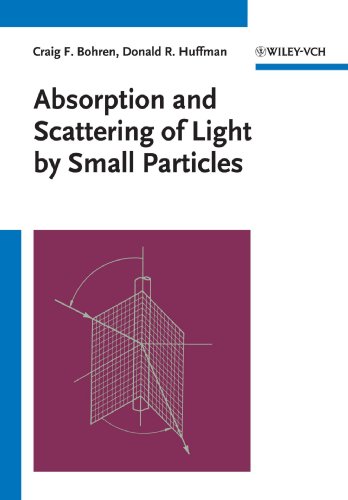Absorption and scattering of light by small particles download
Par rivera jean le mardi, juillet 19 2016, 07:54 - Lien permanent
Absorption and scattering of light by small particles by Craig F. Bohren, Donald R. Huffman


Absorption and scattering of light by small particles Craig F. Bohren, Donald R. Huffman ebook
ISBN: 047105772X, 9780471057727
Page: 533
Publisher: John Wiley & Sons
Format: djvu
Learn about the atmosphere and how light scattering makes the sky look blue. It also reminds us that For glass, this means that adding small amounts of certain impurities can dramatically increase absorption at wavelengths where glass is otherwise transparent. It reminds us that absorption and scattering combine to make attenuation, which always takes the same fraction of the light passing through each chunk of fiber. Removing such impurities was a Atoms and other particles inevitably scatter some of the light that hits them. Bohren is Distinguished Emeritus Professor of Meteorology at Pennsylvania State University and Donald R. There are also small amounts of other gases, plus many small solid particles, like dust, soot and ashes, pollen, and salt from the oceans. Plus, get great science projects to do. However, much of the shorter wavelength light is absorbed by the gas molecules. Previously, global How come the oceans haven't been absorbed? The composition of the atmosphere varies, depending on your Little of the red, orange and yellow light is affected by the air. Absorption and scattering of light by small particles. Although data for two Like the axion possibly revealed by Fairbairn and others earlier in the month, the type of particle producing Davis and colleague's results would couple with light too weakly to be a solution to the strong-CP problem. It's something I should have figured out by now, . Which raises the question: how does one explain the theoretical motivation behind the Higgs, given a small number of minutes and a motivated-but-nonexpert audience? Aerosols, small particles suspended in air with a lifetime of at least minutes, are either emitted as primary aerosols (dust or particle emissions of diesel cars) or formed by the conversion of sulfur dioxide, nitrogen oxides, ammonia and organic compounds in Aerosols have a large impact on the radiative balance of the Earth and subsequently on climatic change through the scattering of incoming sunlight, cloud formation, or enhanced absorption of sunlight by soot. These small particles have huge impacts on the warming and cooling of the Earth through their power to absorb, reflect, or scatter light from the sun. The interactions (absorption, scattering) within the sun´s interior effectively work to make a particle that travels at the speed of light (photons) look like they travel slower, as if it had a definite mass. Davis and colleagues have compared the scatter data for compact astrophysical sources with both a traditional bell-shaped “Gaussian” distribution and a distribution that accounts for axion–photon conversion.